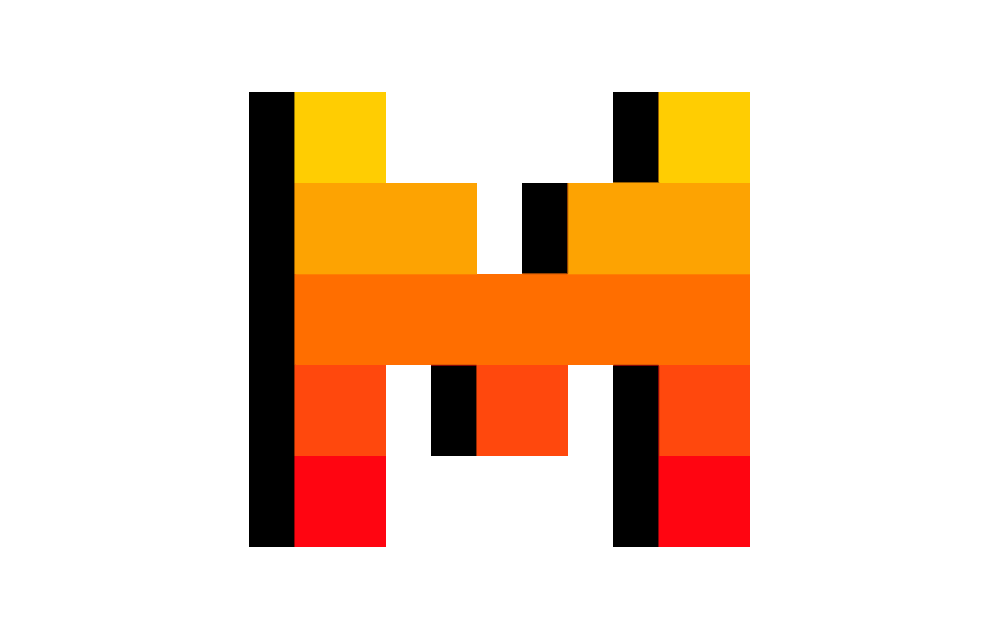In this article, we’ll help you combine the efficiency of digital education with the personal touch customers need
Are your customers getting the most out of your product? If you're finding that users aren’t fully adopting your SaaS platform or are leaving too soon, you’re likely facing a common challenge: educating your customers in a way that’s both scalable and personal. It’s tough, right? Rely too much on digital solutions, and it feels cold. Focus only on human interaction, and it becomes impossible to scale.
Here’s the good news: you don’t have to choose one or the other. There’s a way to combine the efficiency of digital education with the personal touch customers need to feel supported. In this article, we’ll walk you through how to blend both approaches seamlessly. We also share tips from Simona Dimitrova, Head of Education at Pennylane, who has firsthand experience designing hybrid education programs. So, let's get started.
Outline
- Introduction
- The Role of Digital Education: Scalability and Efficiency
- The Value of Human Interaction: Personalization and Support
- Striking the Right Balance: When to Use Digital vs. Human Interaction
- Go Digital for Onboarding and Basic Training
- Use Human Interaction for Advanced Users or Complex Issues
- Blend Both for Key Milestones
- Measuring the Effectiveness of Blended Education
- How MeltingSpot Can Help Your SaaS Business Educate Customers
The Role of Digital Education: Scalability and Efficiency
Digital education has completely transformed the way SaaS companies teach and support their customers. It’s no longer just about scaling your efforts but more about creating an engaging, self-directed learning experience that meets your users where they are. Whether through interactive tutorials, on-demand videos, or in-app guides, digital education allows you to educate thousands of customers at once while keeping things personalized.
As Simona puts it: “Digital education lets us support thousands of users without missing a beat. Whether it’s a quick video tutorial, a handy in-product guide, or a full learning module, we can give our users the tools they need, exactly when they need them.”
Just think of what this can do for your business growth. Imagine a new user signs up for your SaaS platform, instead of waiting for a human touchpoint, they instantly get access to a self-paced course, video walkthroughs, and helpful tips that pop up while they explore. What will happen: No waiting, no frustration…. just instant support when it matters most. And this will be your winning point!
Here’s how digital education changes the game:
- Self-Paced Learning for Flexibility: Customers can move through content at their own speed, whether they're onboarding or refreshing their skills. This approach is convenient, as it will give them the freedom to learn when it suits them best.
- Real-Time Guidance: Embedded tutorials and product tips provide users with the exact help they need, exactly when they need it which is another plus point and will help you tremendously.
- Scalable Webinars and Videos: Whether you're introducing a new feature or offering advanced training, webinars, and video content will allow you to reach large audiences while still delivering valuable, personalized education.
Remember that with the right digital education tools in place, you’ll not only scale your customer success but also provide a smooth, frustration-free experience that will keep your users engaged and happy!
The Value of Human Interaction: Personalization and Support
While digital education is great for teaching customers on a large scale, it can sometimes lack the personal touch. That’s where human interaction comes in - it offers the kind of personalized support that makes users feel truly valued and heard. Live Q&A sessions, one-on-one guidance, and tailored advice can solve specific problems, build trust, and strengthen relationships.
No doubt automated tutorials are useful, but they can’t always answer complex questions or adapt to unique situations. This is where real human help shines. A personal touch can make a big difference when a customer is stuck or needs deeper insights.
Here’s how adding human interaction can take your customer education to the next level:
- Live Webinars and Q&A Sessions: These are a great way to offer real-time help. Customers can ask questions, get direct answers, and hear advice tailored to their specific challenges. It’s also a chance for them to interact with experts and feel more connected to your product.
- One-on-One Consultations: For customers with more complex needs, sometimes a personal session is the best solution. Whether it’s walking them through a tricky feature or helping them figure out how your product can solve their specific problems, one-on-one support can provide the guidance they need to move forward confidently.
- Peer-to-peer learning as a driver of adoption: When users exchange tips, share use cases, or help each other troubleshoot, they move beyond passive usage—they become active participants in their own learning journey. Facilitating these peer interactions within your product environment or during live training moments reinforces engagement and speeds up adoption.
Combining the scale of digital education with the personalization of human interaction creates a more well-rounded customer experience. Your users will feel supported, valued, and more confident in using your product, which will then lead to greater satisfaction and long-term success.
Learn more in our article on Low Touch: Meaning and Principles and discover the best strategies for creating impactful, automated support.
Striking the Right Balance: When to Use Digital vs. Human Interaction
As a SaaS company, you know how challenging it can be to find the right mix between automated digital education and hands-on human support. On one hand, digital tools are great for scalability as they help you teach more users faster. But on the other hand, some situations need a more personal touch, and that’s where human interaction steps in. The real challenge is knowing when to rely on digital tools and when it’s time to offer personalized help.
Simona shared what has worked for them: "We use digital education for most of our onboarding and training. But for advanced users or those with unique needs, we make sure human support is always available—whether through live Q&A sessions or one-on-one consultations."
So how do you know when to go digital and when to step in with human interaction? Have a look at these tips for some ideas:
1. Go Digital for Onboarding and Basic Training
When someone’s just starting with your product, they likely don’t need personalized support for every little thing. Self-paced tutorials, in-app guides, and short video walkthroughs can do the job just fine, giving them a quick way to get up and running. Digital content is ideal here because it allows users to learn at their own pace and on their own schedule; whether that’s during work hours or late at night. And it takes some pressure off your team, freeing them up for when users really need them.
2. Use Human Interaction for Advanced Users or Complex Issues
As users get more comfortable with your product, they may start running into trickier questions or more complex needs. This is when human support really matters. For instance, a one-on-one consultation can help guide them through advanced features, or a live Q&A can clear up specific challenges they’re facing. Personal interaction lets you provide detailed, custom advice that no automated tool can match, making your users feel heard and supported.
3. Blend Both for Key Milestones
When you’re rolling out big updates or launching new features, it’s smart to use a mix of digital education and live support. Digital tools like webinars and tutorials give users the basic info they need, while live sessions or demos allow them to ask questions and get personalized guidance. This way, they can feel fully supported as they learn the ins and outs of your latest features, without feeling like they’re on their own.
Finding the right balance between digital and human interaction will make your users feel like they’re in good hands. By using digital tools for scalability and stepping in with personal support when needed, you actually build trust and help customers get the most out of your product. Plus, as we always say, when customers feel supported, they’re more likely to stick around and become loyal advocates for your brand.
Check out our article on High Touch vs. Low Touch: Choosing the Right Customer Success Strategy to help you decide which approach best serves your customers.
Measuring the Effectiveness of Blended Education
To make sure your hybrid education approach is working, you need to track how both digital tools and human interaction impact key business goals like product adoption, user engagement, and customer satisfaction. It’s not enough to just offer a mix of digital and human support; you need to know what’s actually making a difference for your customers.
Start by tracking how users interact with your content. Are they completing digital tutorials? Are they attending live webinars or Q&A sessions? Are there points in the user journey where human touchpoints seem to make the biggest impact? By gathering this data, you can identify when users need more personal support and which types of content (digital or human) are driving the best results.
For example, you might find that users who complete a self-paced onboarding course and also participate in a live demo adopt your product more quickly. Or you could discover that users who engage with both digital content and human support report higher satisfaction levels. These key findings will help you continually fine-tune your approach, and will ensure that you're giving your customers the right balance of automated and personal help.
Curious about which customer success strategy—Low-Touch, Mid-Touch, or High-Touch—best fits your SaaS business? Explore the benefits of each in our guide on The Different Digital CS Strategies to make an informed decision
How MeltingSpot Can Help Your SaaS Business Educate Customers
At MeltingSpot, we understand the challenge of balancing digital education and personal support to create a scalable yet personal learning experience. Our platform offers in-app learning tools such as embedded tutorials, courses, and real-time guidance, providing users with immediate support as they navigate your product—making the experience seamless and frustration-free. This means your customers learn at their own pace with self-directed modules while being able to ask questions and receive guidance right within the platform.
In addition to these core features, user segmentation with groups and tags allows you to tailor the learning experience based on customer profiles, ensuring that each user gets the level of support they need. For example, advanced users can be automatically directed to complex training modules, while new users may receive foundational tutorials. This flexibility not only personalizes education but also supports low-touch customer success strategies by automating much of the initial learning.
To bridge the gap between digital and personal interaction, foster user collaboration, allowing customers to share tips, ask questions, and support each other. Forums help users find answers from peers who have faced similar challenges, building a support network that enhances learning.
With the MeltingSpot dashboard, your team can easily track user progress, engagement with educational content, and identify points where human interaction may be beneficial. This data-driven approach ensures that your customers receive both the self-guided resources they need and the personal touchpoints they appreciate, optimizing the education experience.
Ready to see how MeltingSpot can transform your customer education? Let’s take the next step together. Explore our solutions and find the perfect fit for your SaaS business today!
Become an expert in software training & adoption with MS Nation the MeltingSpot Community
Step into MS Nation, our Community, your ultimate training hub for mastering software adoption and user success!
Join MS Nation







.svg)

 Perplexity
Perplexity
 Claude
Claude
 Mistral
Mistral
 Gemini
Gemini
 Grok
Grok





.svg)
